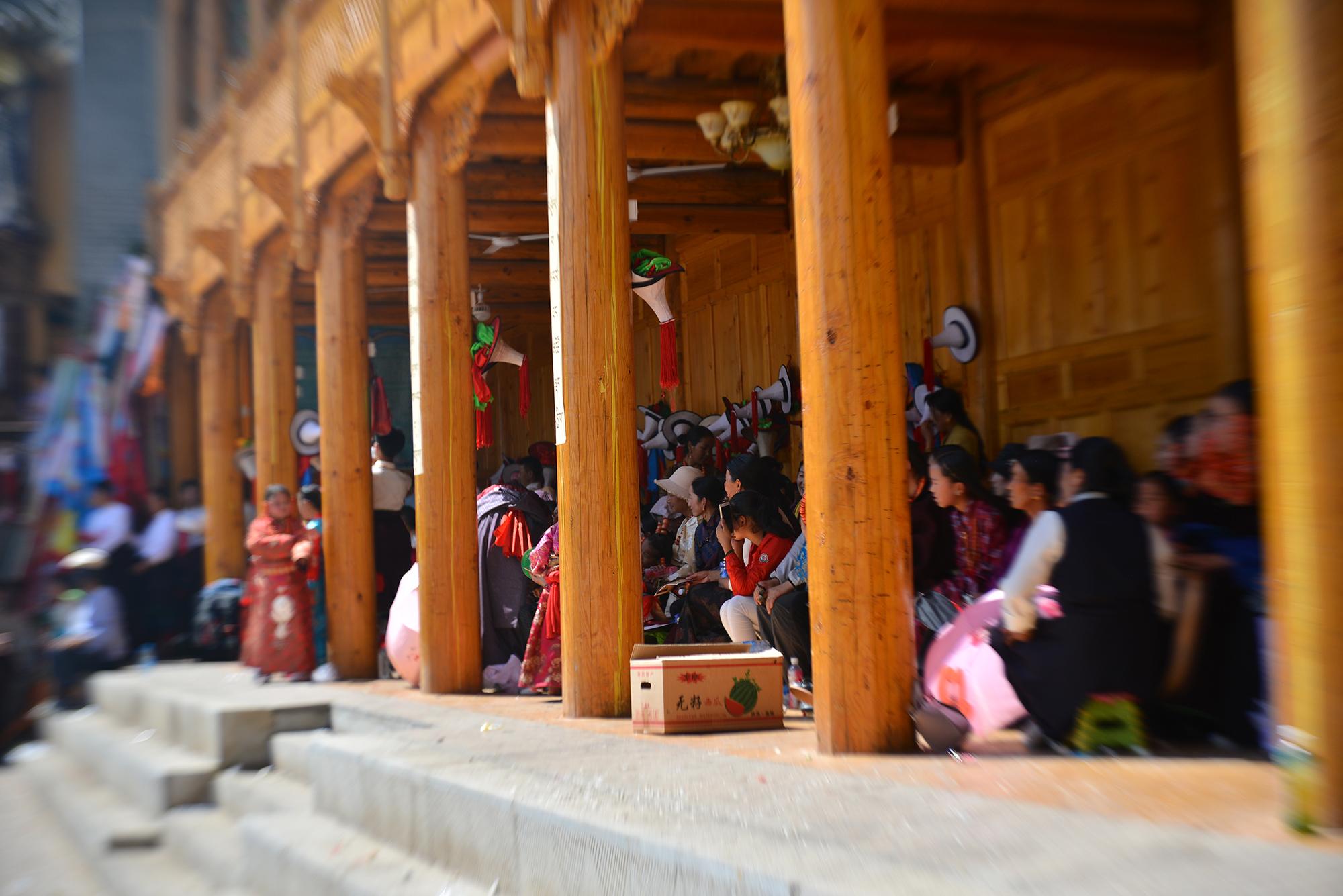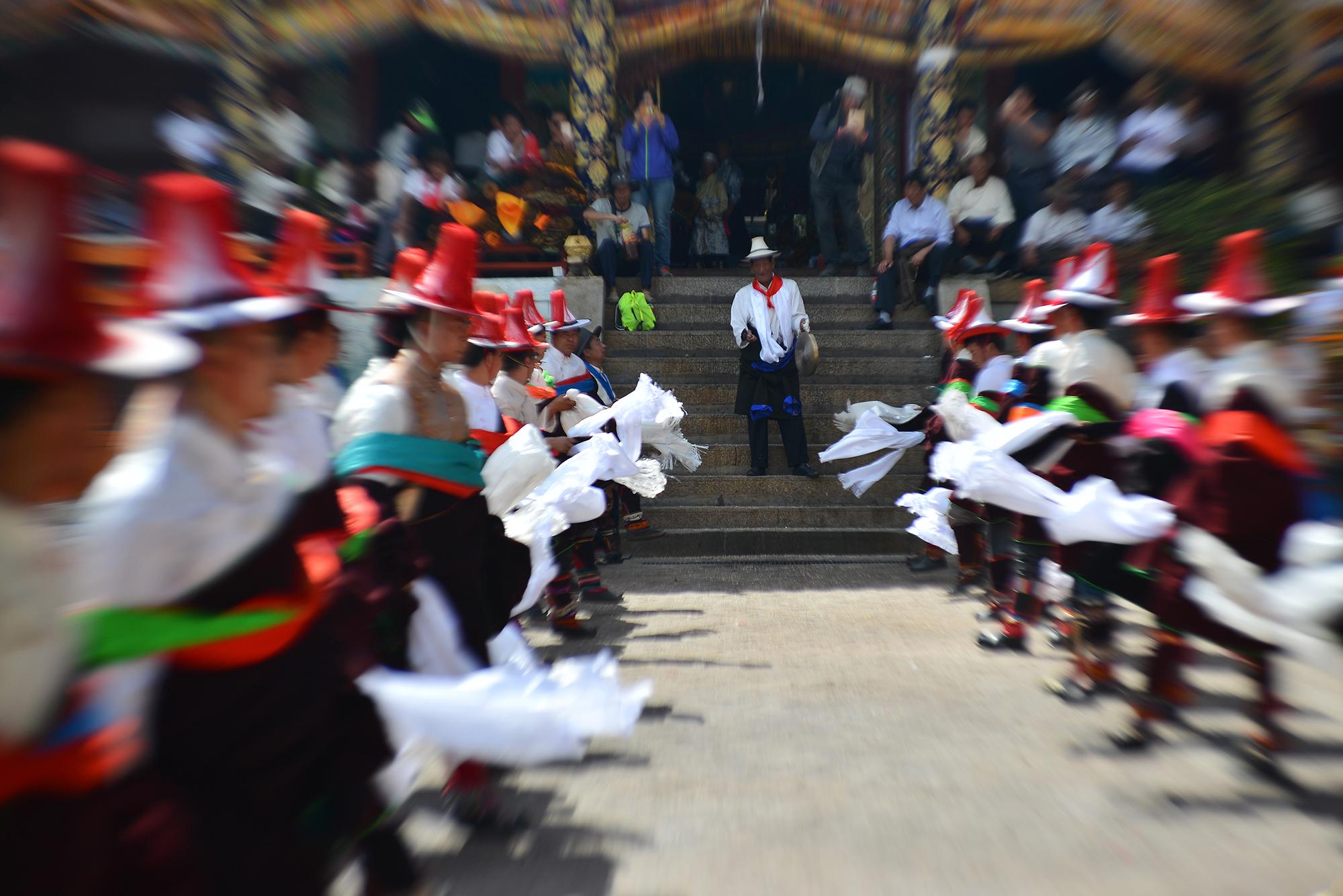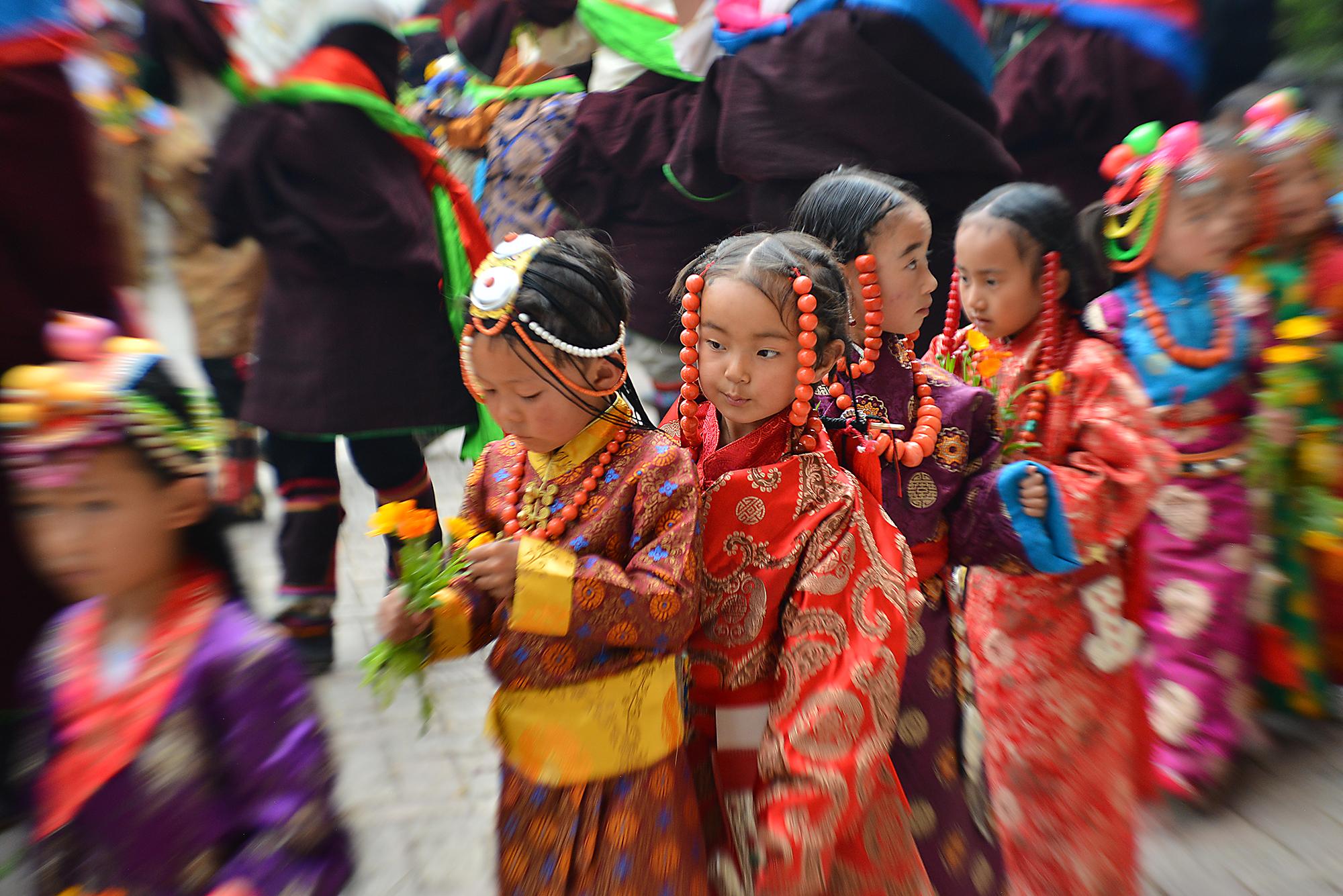Lurol at Sadjyel Village 2010-2017
ས་དཀྱིལ་ཀླུ་རོལ། ༢༠༡༠་ནས་༢༠༡༧བར་།
同仁县 四合吉村 六月会 2010-2017
Photo essay by Andrew Grant.
During the sixth lunar month of the Tibetan calendar, usually the middle of July, villages around Tongren County Town (also known as Rebgong རེབ་ཀོང་། in Tibetan) in Qinghai Province/Amdo Tibet come alive with festivals that include feasting, dancing, and La ba (lha pa ལྷ་པ), the trance medium that is temporarily inhabited by a local mountain god. In the village of Sadjye (Sa dkyel ས་དཀྱིལ) near to the heart of Rebgong, the important deity is Anye Shachong (A mye Bya Khyung ཨ་མྱེ་བྱ་ཁྱུང་།). During the three days of the festival, he is carried on a wooden palanquin and will convey messages to villagers through the La ba. The photos in this essay all occur during the final day of the festival, called Lurol Chenmo (Klu rol chen mo ཀླུ་རོལ་ཆེན་མོ). I attended the festival in 2010, 2014, and 2017 and took photos during each visit. The images with the swirl effect are from 2017 and clean digital images are from 2014.
The final day of the festival is broken into a series of dances and performances. It also includes music, flowers, and offerings of alcohol, yogurt, grain, paper, and incense. These activities all occur in the courtyard of a temple built where the village abuts the mountain side. Since I first visited the festival in 2010, Sadjye village’s temple has been drastically rebuilt. The burnt offering altar above the temple entryway has been reconstructed, a beautiful wooden veranda that shields villagers and tourists from the sun has been expanded, and a painted model of the mountain has replaced a simple drainage grill as the place to accept liquid offerings of yoghurt and alcohol.
The festival is not an instance of traditional culture surviving into the present. Since the Reform period of the PRC began in the late 1970s, more freedom to exercise religion and practice local customs has returned to a degree in Tibetan regions of China. Villages near Rebgong began to celebrate the Lurol festival again, but the practice couldn’t help but be drastically transformed in its revival. Today many of its participants live in urban housing, indeed the village of Sadjye itself is rapidly changing as the Chinese state promotes the urbanization and marketization of Tibetan regions. Villagers also innovate by adding dances and practices to the Lurol festival.
Finally, Lurol occupies an exceptional position in the religious and political life of the Rebgong area. Lurol festival cannot be called a Tibetan Buddhist practice, yet it is influenced by Tibetan Buddhism. It is situated between orthodox religion and lay customs. It also generates a center of power and authority that is outside of state-imposed political structures in farming villages and the urbanized neighborhoods that they are becoming. Of particular importance here is the figure of the La pa who, as an embodiment of the mountain deity, has political power. He can mediate village conflict as well as mete out punishment. Because of this, his position troubles the two dominant social structures of monastic power and sanctioned state power in the region.
I would like to thank Zonthar Gyal (Jerry, Suantairijia) for his help with this essay and for encouraging me to take these photos over the years.
Sources and further reading:
- Makley, Charlene E. 2014. “The Amoral Other: State-Led Development and Mountain Deity Cults among Tibetans in Amdo Rebgong.” In Mapping Shangrila: Contested Landscapes in the Sino-Tibetan Borderlands, edited by Emily Yeh and Chris Coggins, 299–254. Seattle, Wash.: University of Washington Press.
- Suantairijia, 2014. The Study of Sa dkyi Klurol from a Sociological Perspective. BA thesis. Nationalities Teachers’ College, Qinghai Normal University.



























